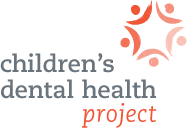The Children's Dental Health Project's blog
New brief helps states improve dental care for kids in Medicaid/CHIP
The Children’s Dental Health Project’s latest brief — Medicaid Dental Guidance to States: An Opportunity to Aim for Equity — offers encouraging news for families who count on Medicaid and the Children’s Health Insurance Program (CHIP) for their child’s health coverage. The new brief spotlights 2018 guidance from the Centers for Medicare and Medicaid Services (CMS). It urges Medicaid and CHIP agencies to clarify their policies to advance equitable delivery of kids’ oral health care. This guidance offers state policymakers, insurers, providers, families, and advocates the opportunity to engage their Medicaid/CHIP agencies in a discussion about aligning payment and benefits. Such efforts can help programs be more responsive and accountable to families.
Our new brief, and associated tools on its resource page, explains more about the guidance and how to start that dialogue.
By advancing equity in oral health, we can ensure each child gets the support they need to grow up healthy and reach their dreams, without dental disease creating a barrier to their success.
The CMS guidance was an outgrowth of a 2016 federal report that found three in four kids enrolled in Medicaid faced barriers to receiving the full breadth of dental care they needed. The report was based on a four-state sample of Medicaid programs. The central problem was a conflict in state Medicaid policies. States’ Medicaid dental periodicity schedules, which outline the minimum set of services kids should receive, were not aligned with their payment policies, called fee schedules. When the periodicity and fee schedules don’t match, it presents a roadblock to care for children and families.
CDHP has long urged for Medicaid and CHIP programs to better align their periodicity and payment policies to better reflect clinical guidelines for preventing and managing tooth decay. The clarifying guidance promotes equity in children’s oral health care by ensuring more kids get individualized dental care. Medicaid’s child-specific benefit — Early and Periodic Screening, Diagnostic and Treatment (EPSDT) — was designed with individualized care as its driving force. In Medicaid, or CHIP programs that use EPSDT, kids must have timely access to appropriate care, even if that care goes beyond what’s outlined in the Medicaid/CHIP dental periodicity schedule or state plan. This standard falls in contrast to the “one-size-fits-all” approach to oral health care often used today.
The CMS bulletin affirms an individualized approach to children’s oral health care. This approach is critical to equitably address families’ oral health needs and to meet EPSDT benefit standards for children.
Importantly, the CMS bulletin affirms an individualized approach to children’s oral health care. It clarifies that, as in EPSDT, dental periodicity schedules are to be treated as a minimum level of benefits for kids. Providers can go beyond those coverage guidelines to ensure a child receives what is needed to achieve good oral health. State policies should facilitate rather than hinder this approach to care.
As we have previously shared on this blog, CDHP has worked with both federal and state partners to advocate for policies that support individualized care. We’ve done so because this approach is critical to equitably address families’ oral health needs and to meet EPSDT benefit standards for children. Our newest brief shares how CMS’ 2018 guidance lays a strong foundation to advance this model of care and correct challenges caused by misaligned Medicaid policies.
Now we are asking you to get involved. CDHP’s brief walks through the roles every stakeholder can play, whether you’re a policymaker, dental provider, insurer, family, or advocate. To help you be most effective, our brief includes a “Checklist for Advocates.” This resource outlines key materials and critical questions to answer in order to understand where your state stands with respect to children’s Medicaid dental policies and individualized care.
Be sure to access other useful materials listed on the brief’s resource page, including…
- A new video explaining the CMS bulletin and CDHP’s brief
- CDHP’s fact sheet on oral health risk assessments, a clinical tool that is based on an individualized approach to care
- The recording and slides from an expert webinar digging into the details of the CMS bulletin (from August 2018)
- CDHP’s Quick Guide to the CMS bulletin (from July 2018)
Medicaid and CHIP remain strong and important programs to improve the health, well-being and success of children and families. Keeping them strong requires all of us to be diligent in supporting their progress and accountability to the families they serve. Conflicting state policies on coverage and payment are fixable problems, especially when we have a roadmap for change. CDHP hopes our brief and related resources help you identify gaps and achieve solutions to ensure your state program supports families in eliminating poor oral health as a barrier to their goals.
